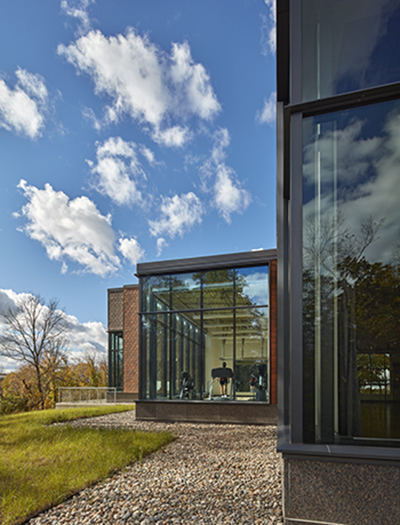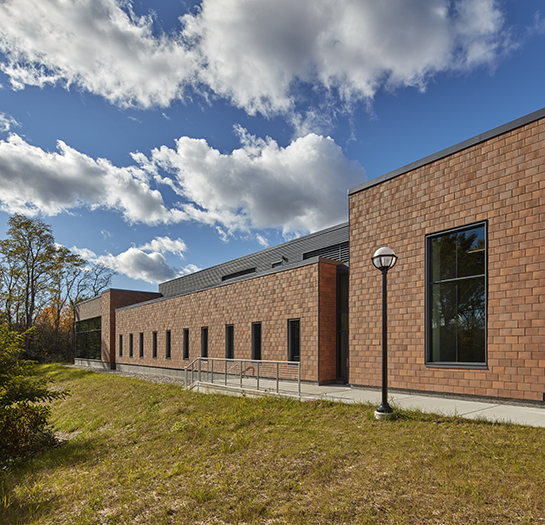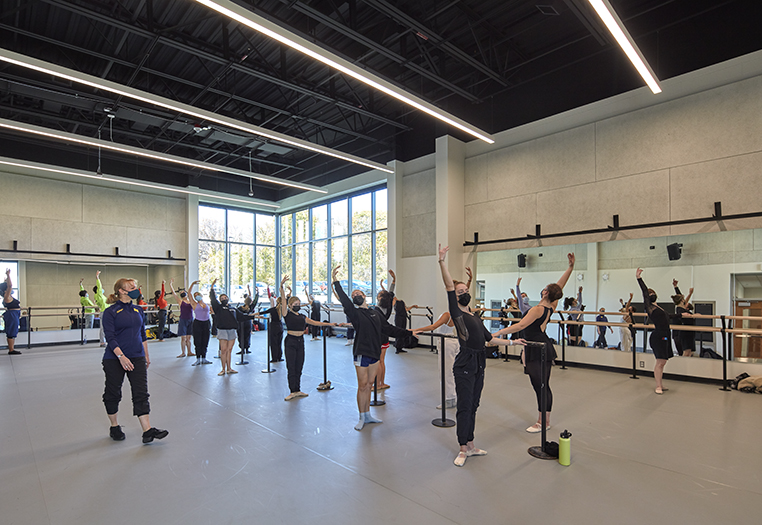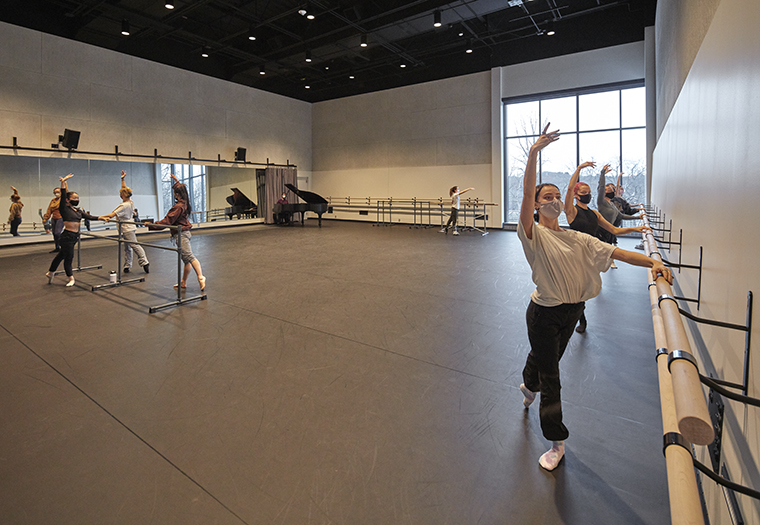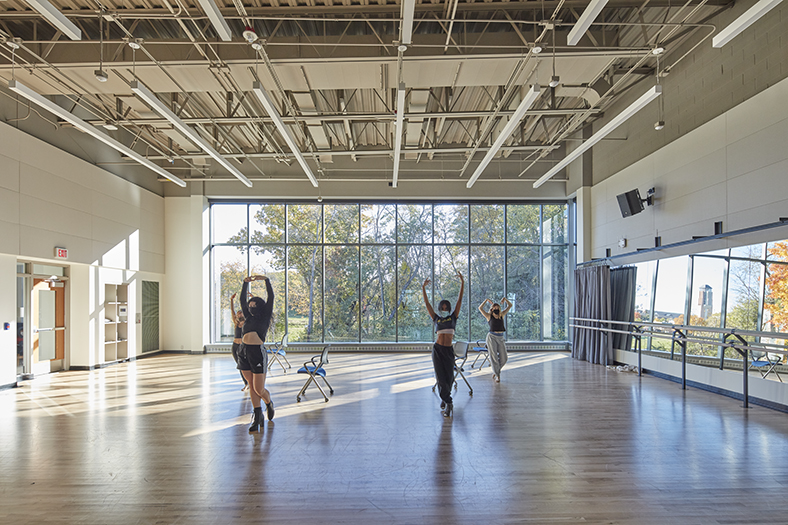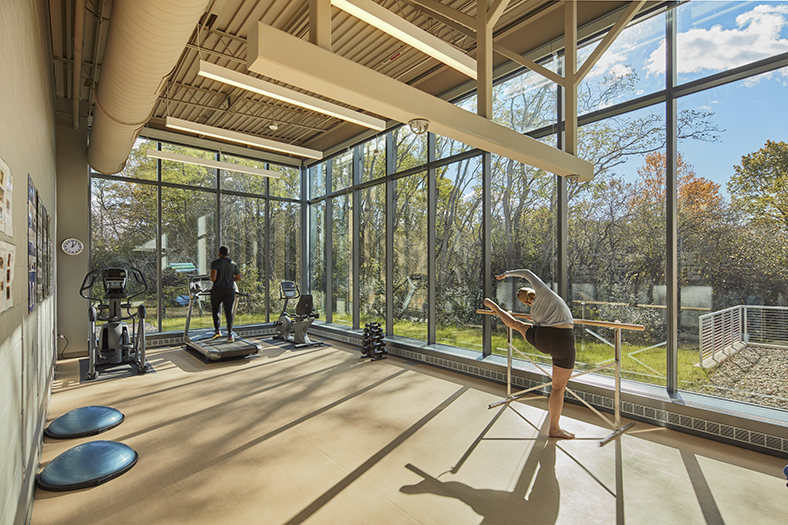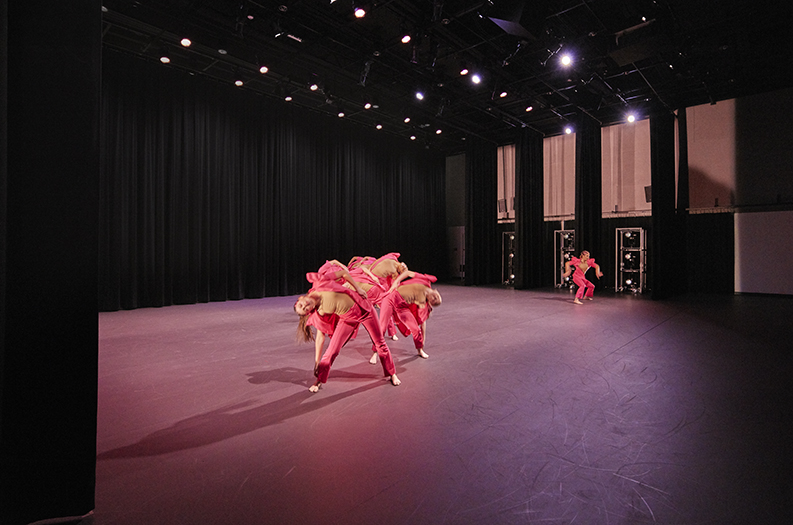The first dedicated facility for the Department of Dance in University of Michigan’s history, the facility joins other creative disciplines in the North Campus. Serving performers and patrons alike, the building includes a 100-seat performance venue, dance studios, locker rooms, and administrative space.
Much like the art of dance itself, this project balances structure, environment, and aesthetic. The challenging program of performance, rehearsal, and teaching spaces demands system sophistication. Accommodating a range of dance genres including screen dance, hip-hop, ballet, and jazz, the structure is flexible and quiet. Multiple rounds of programmatic modeling ensured efficiency of layout, massing, adjacency, audience movement, and performer comfort and accessibility. The highly responsive learning/teaching environments maintain noise separation, mechanical/electrical noise control, adaptive sound system design, natural spatial acoustical feedback, and spatial isolation to achieve optimal acoustics.
Nature is on display throughout the facility. Site planning sensitively preserves existing natural elements and turns them into a feature. Bright and airy, dance studios are strategically positioned to provide maximum views and sight to the surrounding woodlot, with high-efficiency glass introducing ample natural light.
To achieve a high level of energy efficiency, envelope analysis led to a tightly sealed rain screen system with a terra cotta tile exterior which proves a beautiful patina and also a durable exterior finish. The building is prepped for the addition of PV solar panels sufficient to provide full electrical support for all but performance lighting. All lighting systems are LED including the performance/theatre lighting systems. Utility systems are extended from the adjacent School of Music Building to minimize site disruption, and to provide added energy efficiency. Site drainage is heavily managed to eliminate erosion and any polluting run-off, and to control and manage storm discharge.


